I left the main Japan Airlines first class lounge at Tokyo Narita and walked to the far end of the satellite concourse where my flight to Shanghai would depart from.
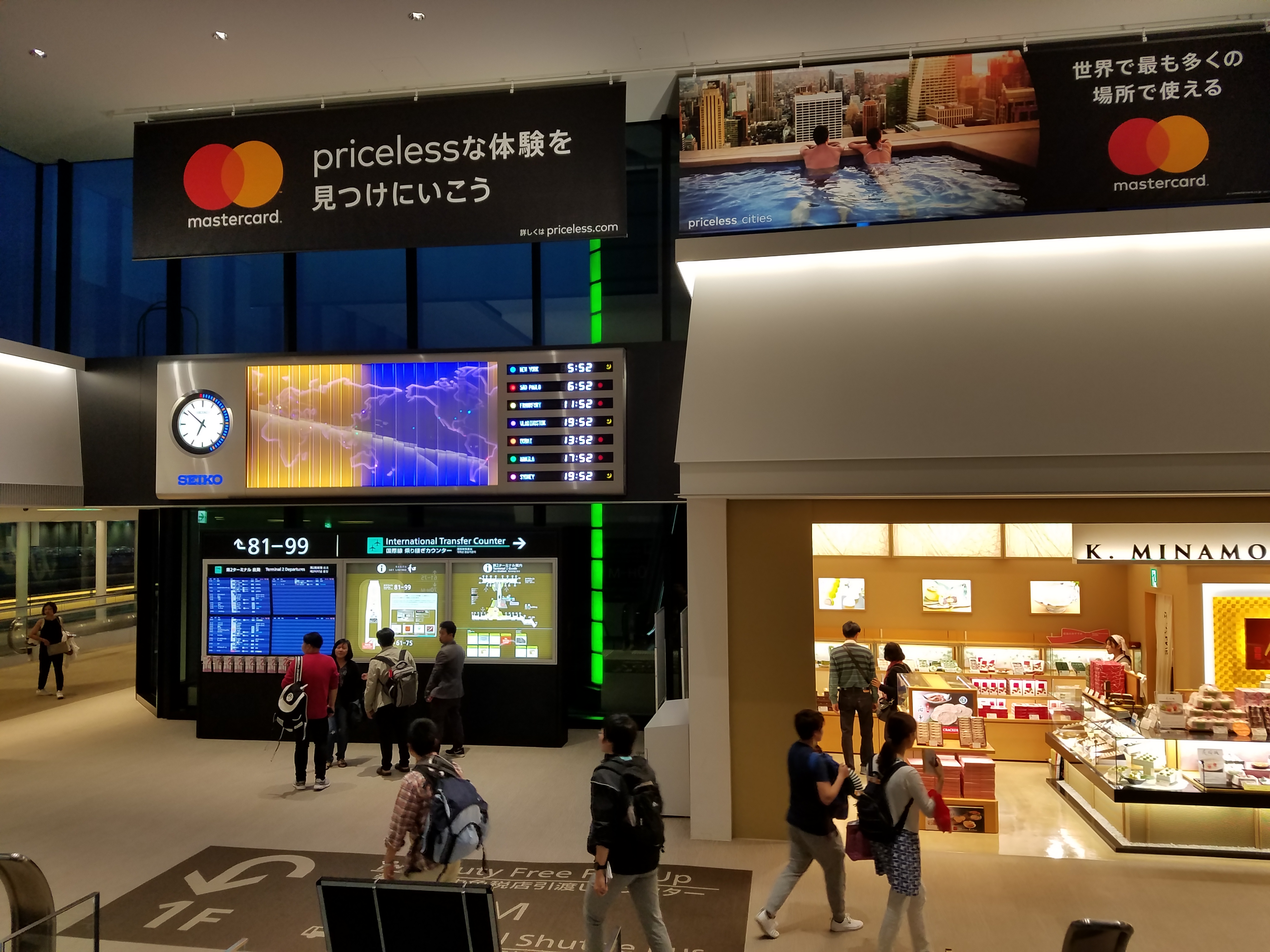
Near the gate was a talking restroom. I couldn’t help but stop. It spoke in a repeating loop explaining which door was for ladies and which was for men. I was in Japan, for sure, at least for the next few minutes.
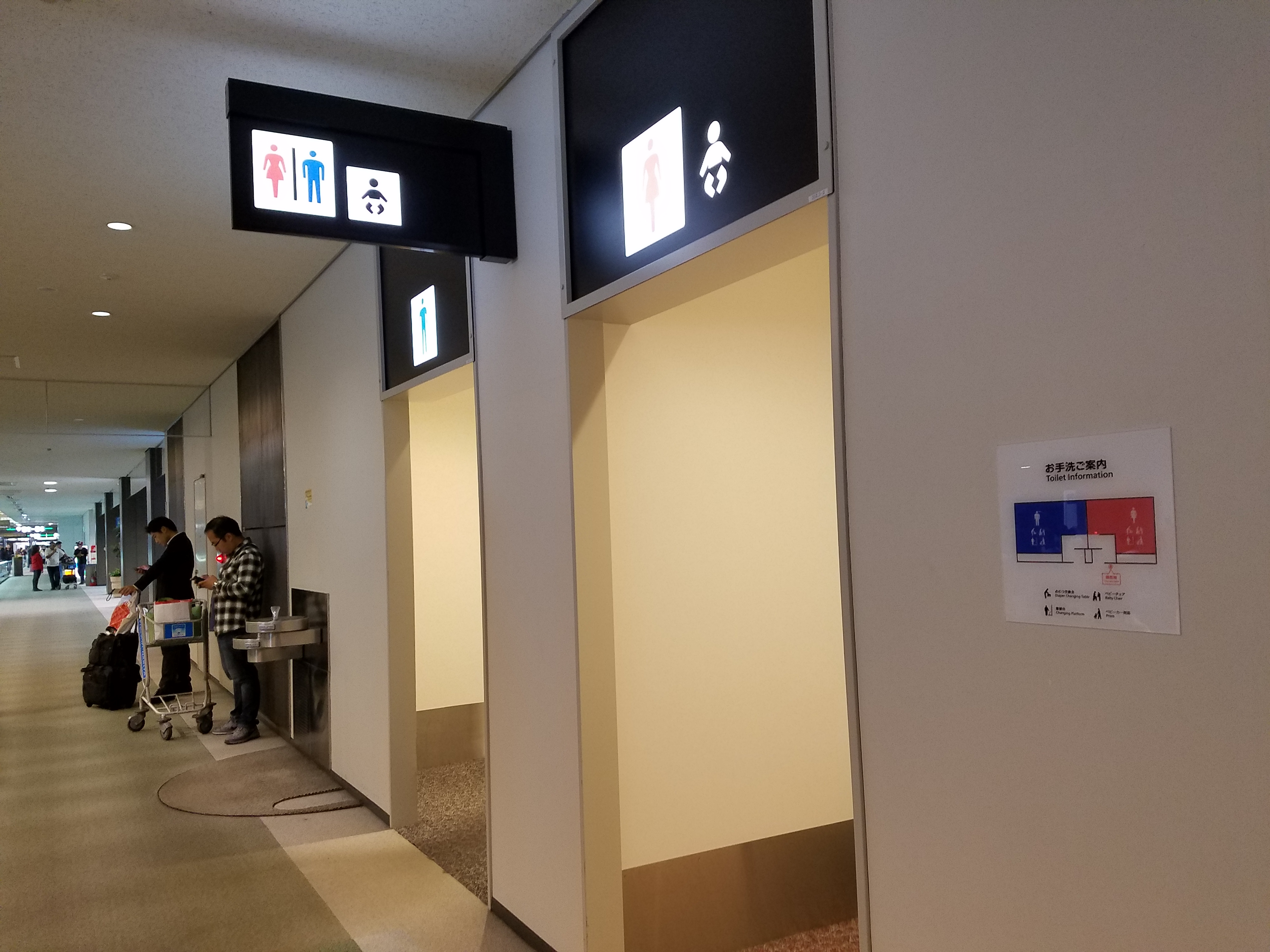
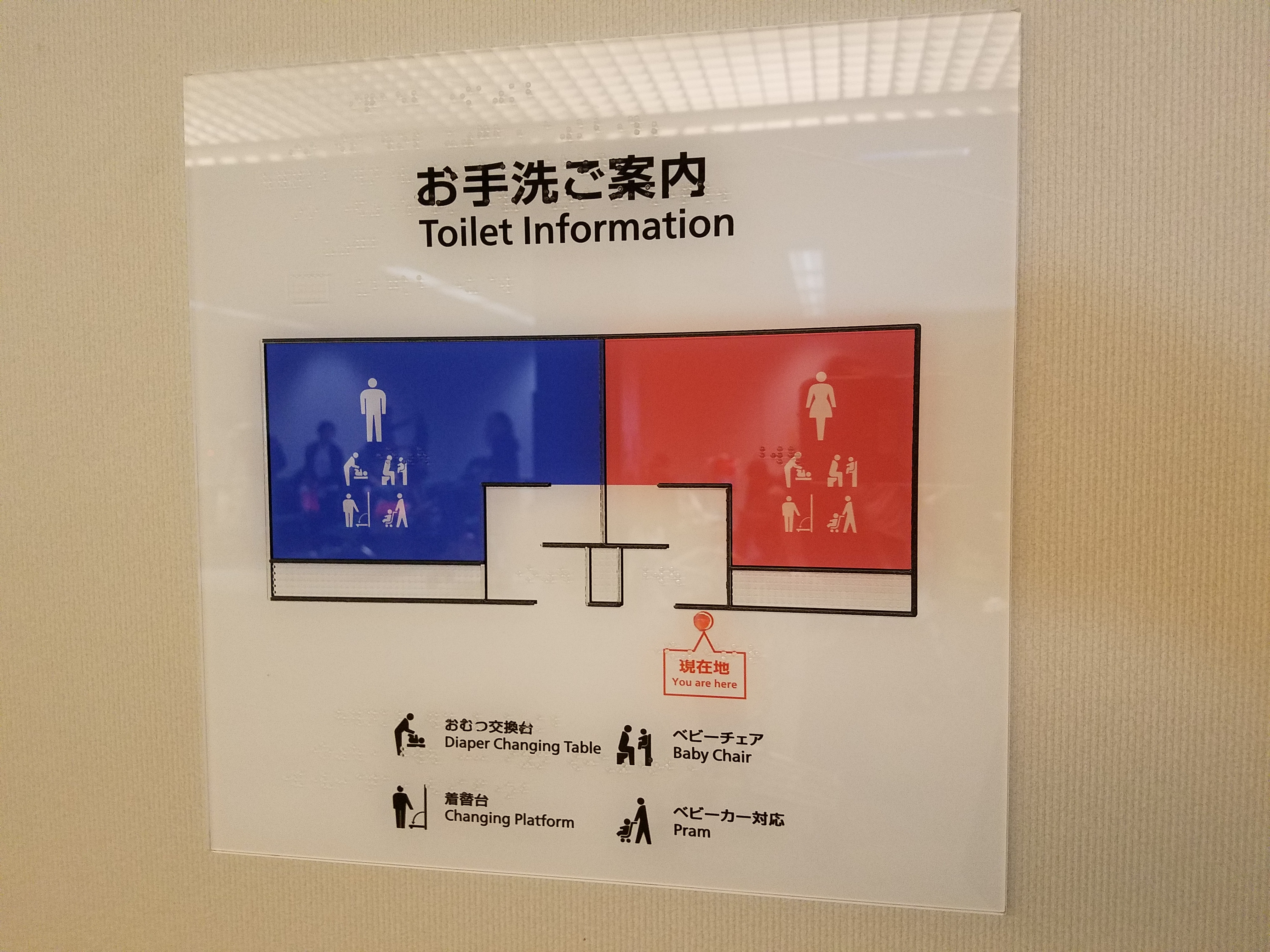
Agents were checking boarding passes as you queued up to board. I was flying business class using British Airways Avios, but had added my American AAdvantage Executive Platinum number to the reservation. That got me access to the first class lounge before the flight. It also meant my boarding pass read ‘Emerald’, oneworld’s top tier elite level.
As a result the agent insisted I board as ‘first class’ even though the flight had no such cabin. Top elites go ahead of business class.
I was sort of excited to be flying a widebody aircraft on such a short hop. The 1100 mile flight would take us about two and a half hours. On the other hand the Boeing 787 we’d be flying had JAL’s old business class seats. They ordered the planes so long ago, and deliveries were delayed so long, that they debuted angled business seats. They’ve been putting in their new business, but it makes sense to put the older product on a regional route.
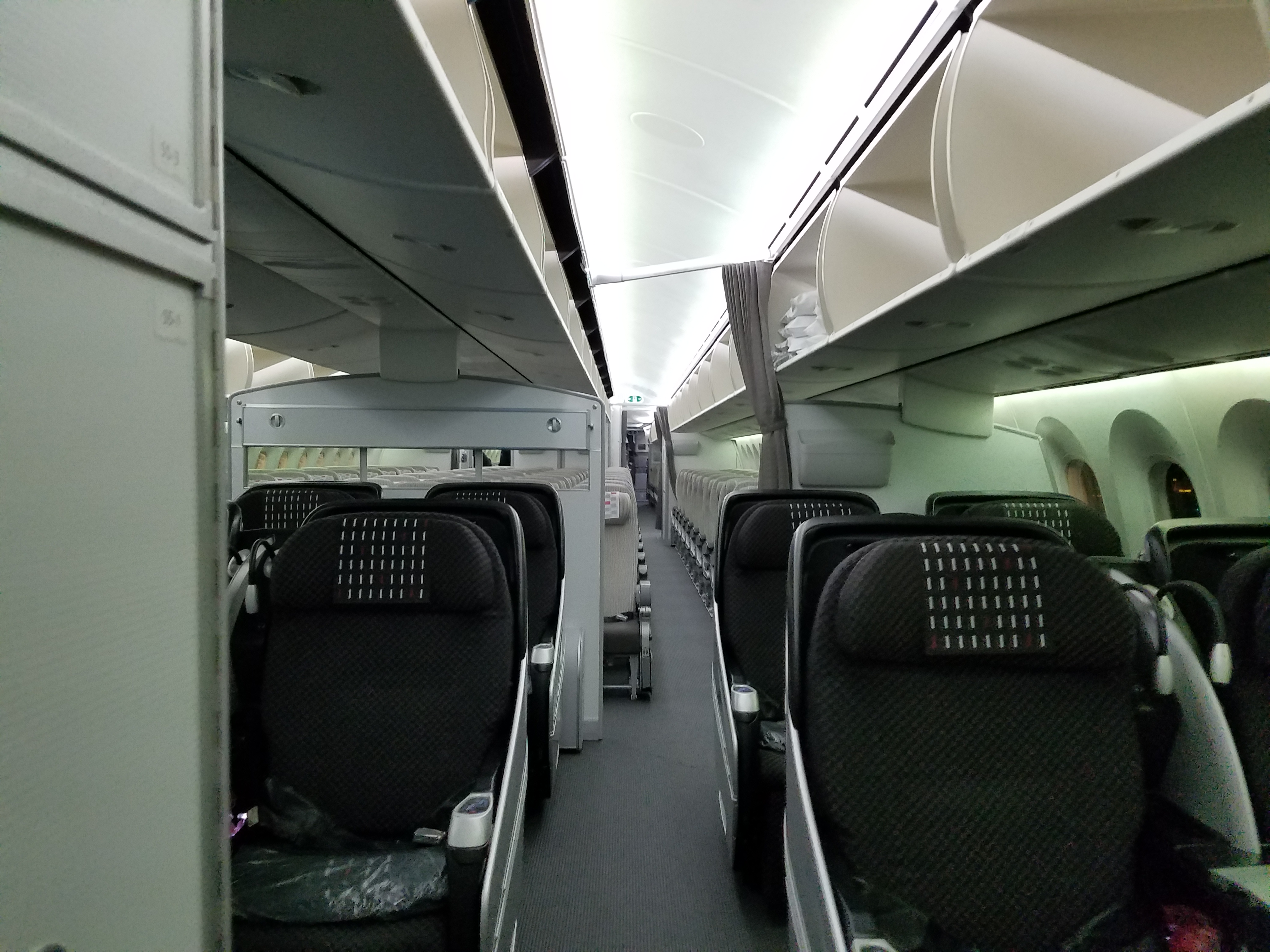
Still within Asia customers in a premium cabin are used to a much better product than Americans are. In Europe they put you in a coach seat, block the middle next to you, and call that business. As a contrast I actually appreciate US domestic first class on short routes. But within Asia more often than not the short haul interiors are the same as long haul interiors, so you commonly get flat beds in business.
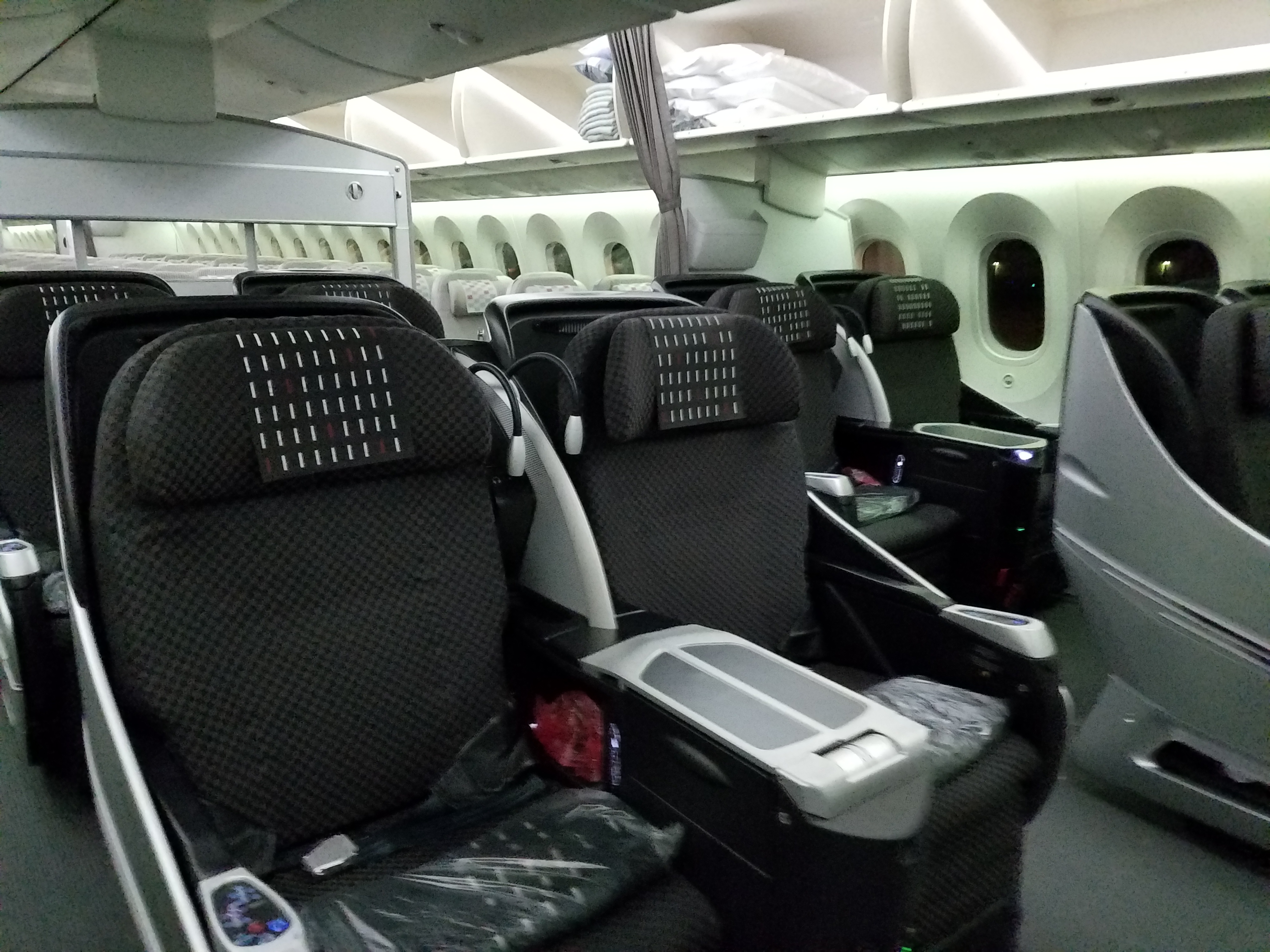
I had a look back to coach, it was an attractive cabin but of course I was grateful to be up front for this flight.
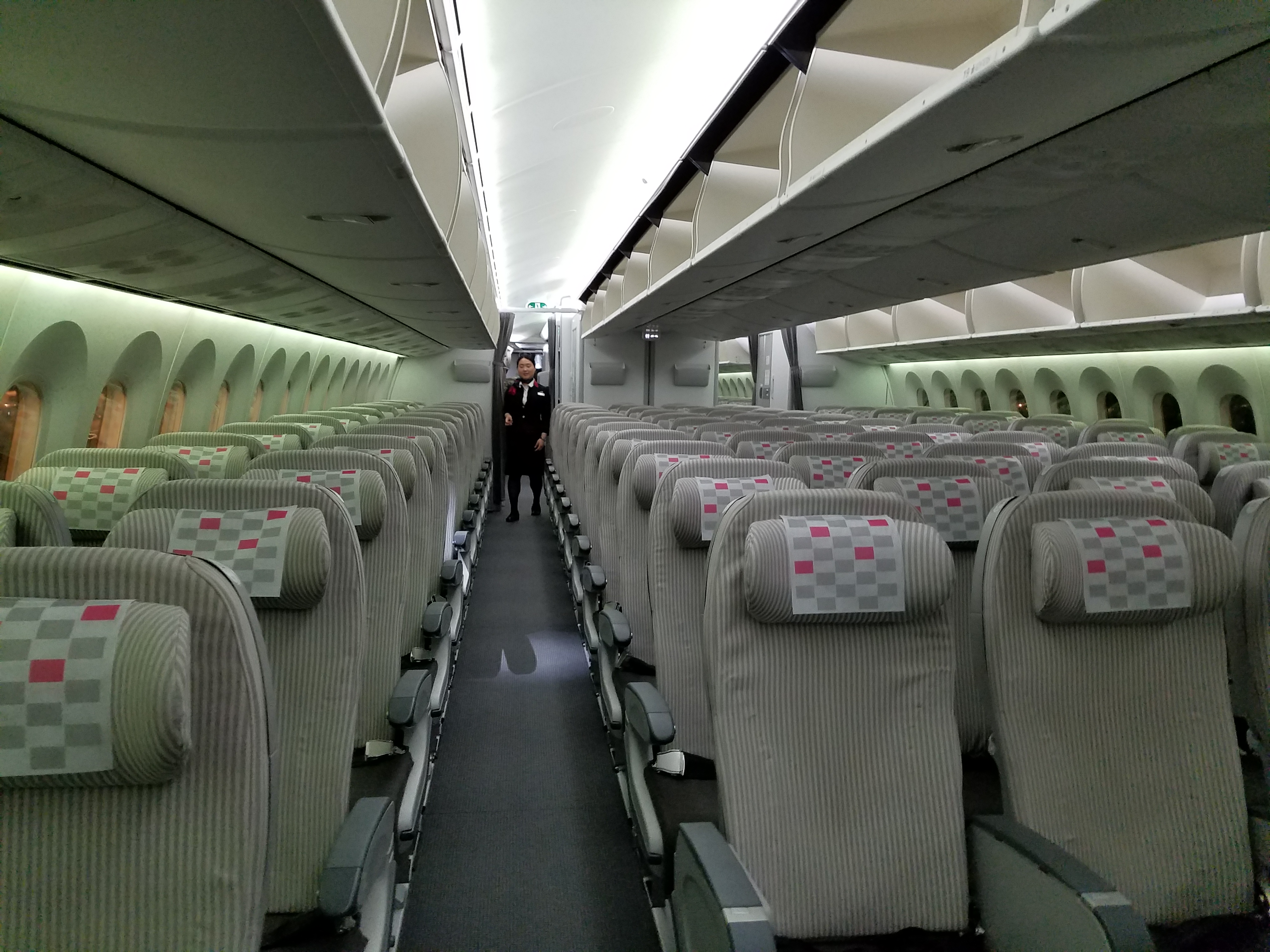
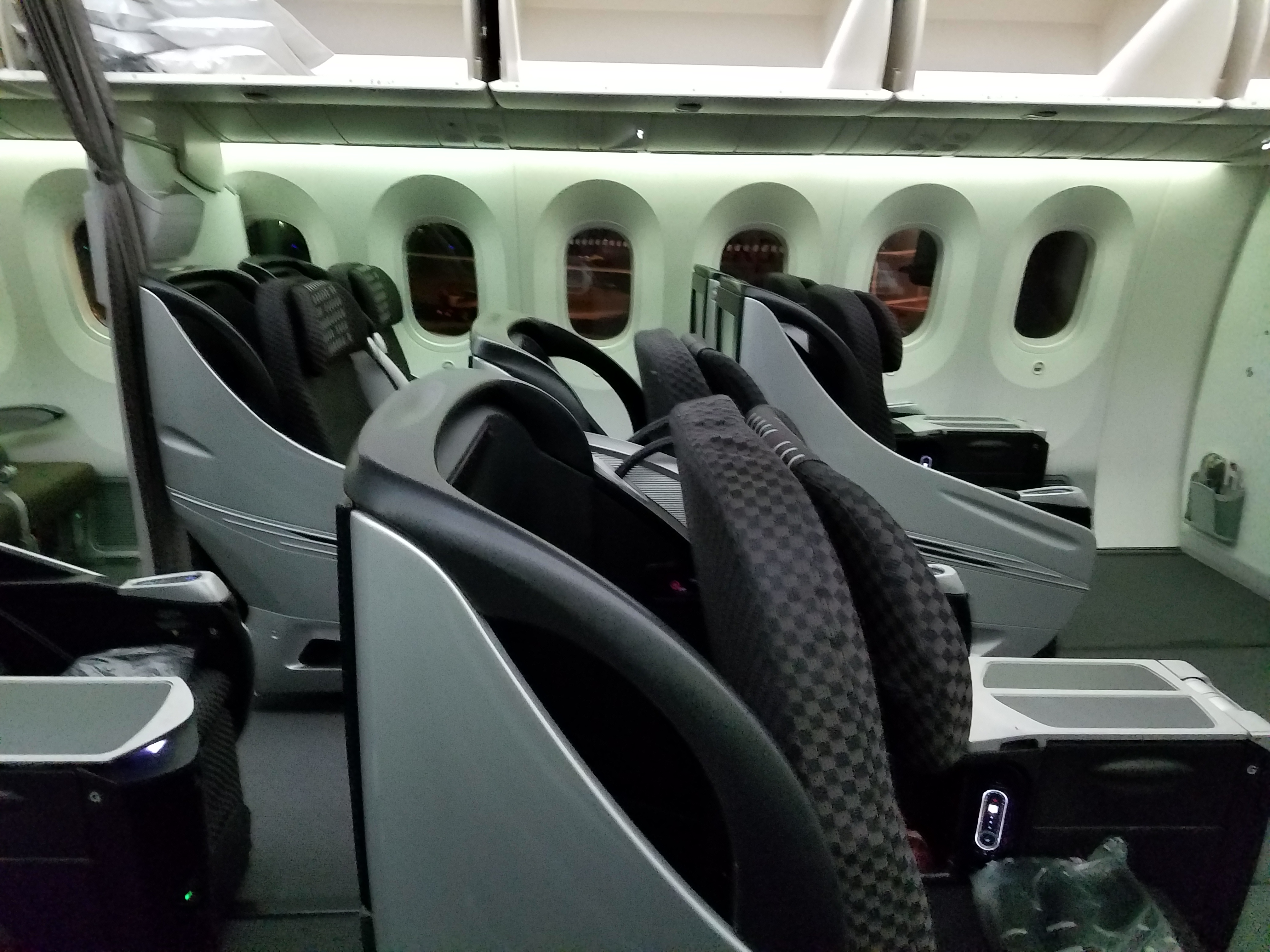
The business cabin was about half full, while the plane was nearly booked solid in back. I began to settle into my seat while the rest of the aircraft boarded. Surprisingly they managed to board a nearly full 787 in 20 minutes.
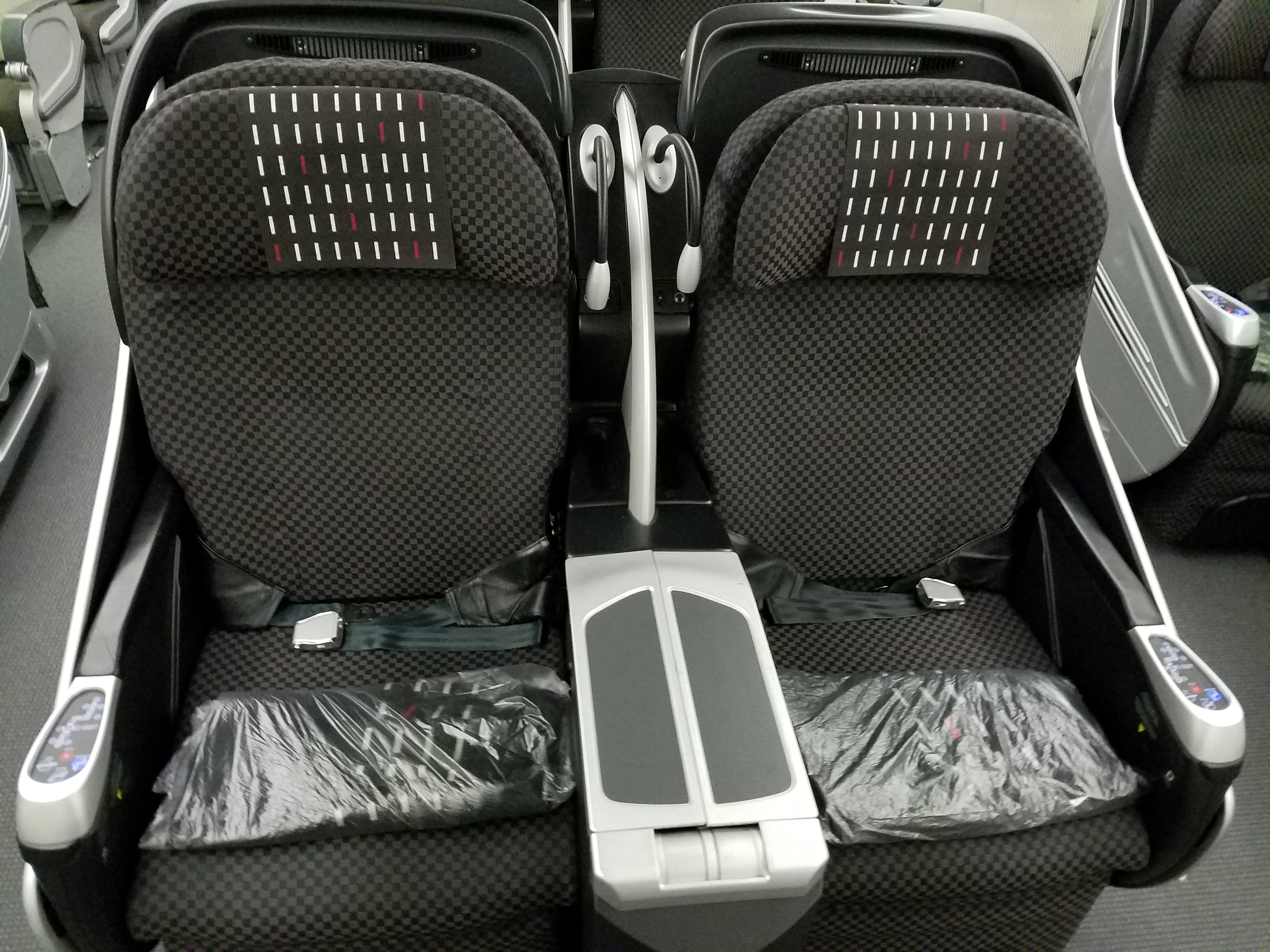
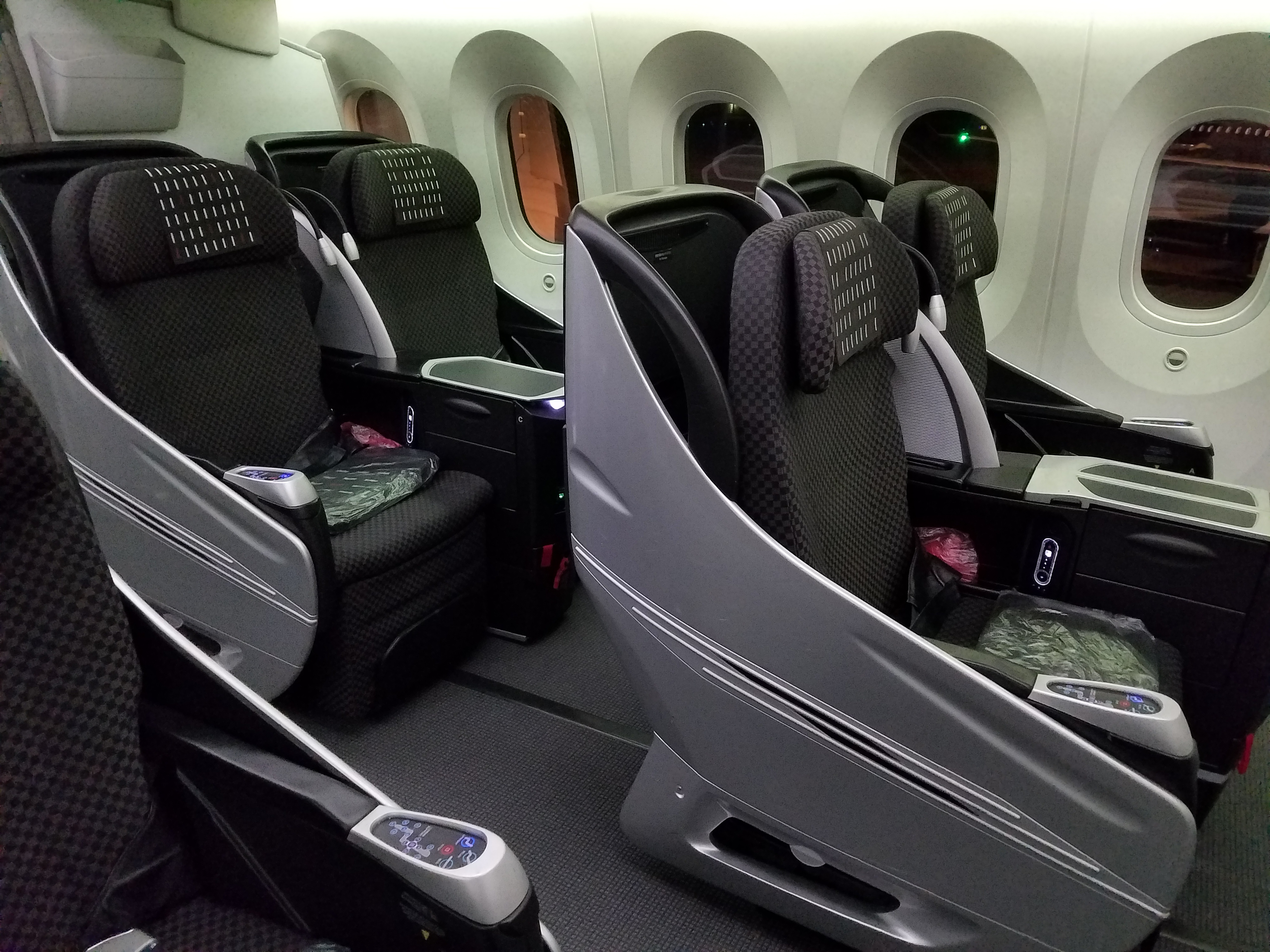
Amenities were offered and menus were distributed. Soon enough we were on our way, there wasn’t really any delay to speak of getting out of Narita midweek after 7:30 p.m. Once up in the air I was given my choice of beverage and a packaged snack. I was simply thirsty and opted for water.
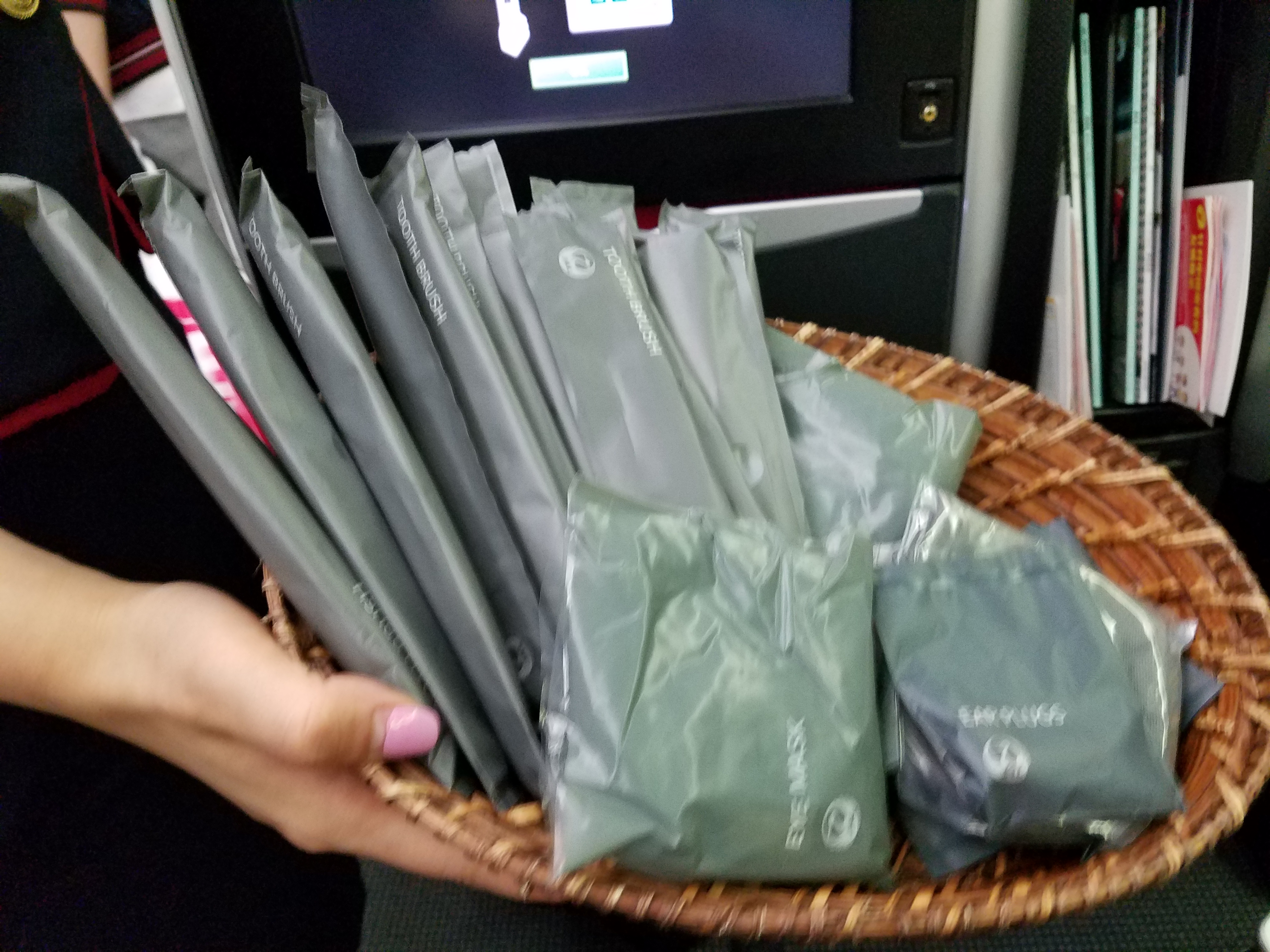
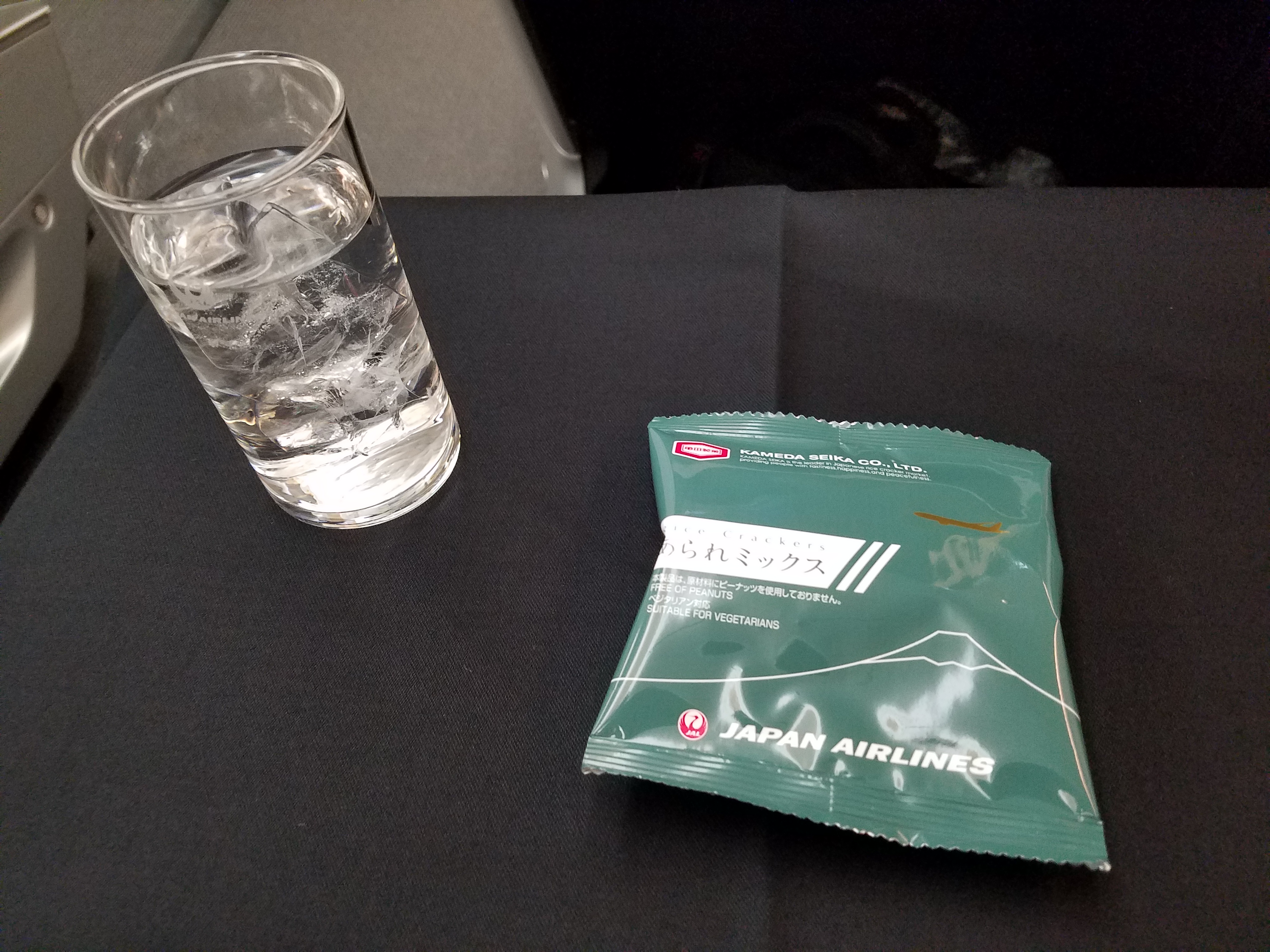
For the meal there was a Western option (beef) and a Japanese course. Having spent the prior three days eating nothing but amazing Japanese food I couldn’t quite skip the last opportunity for awhile to have a Japanese meal even if it wasn’t going to be up to par with everything I’d just experienced.
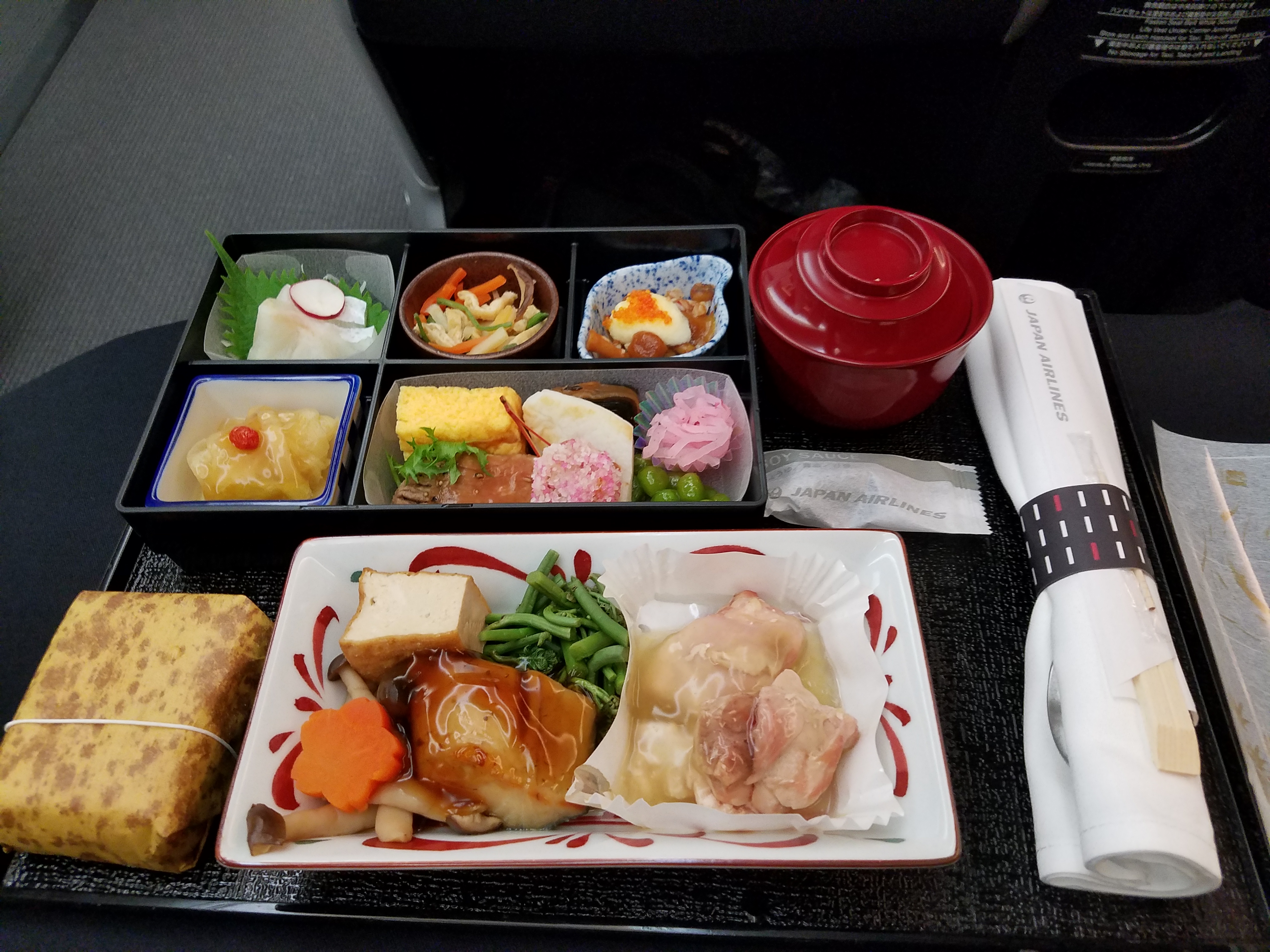
All in all the meal was terrific for a two and a half hour flight. I wish there was some way of replicating it in the states.
I’ve often thought that I’d be willing to pay a premium for an actually good meal in domestic first class. There’s a slippery slope to be sure, pre-order a paid meal and that undermines any incentive for the airline to invest in the base level offering. And what if I misconnect, the airline is out the extra cost for the meal or am I? Still it’s possible to offer reasonably good food on a plane and it would improve the experience if an airline in the U.S. offered it. Airline management wants to monetize everything else, why not that?
After dinner dessert was a small cup on Haagen Dazs ice cream.
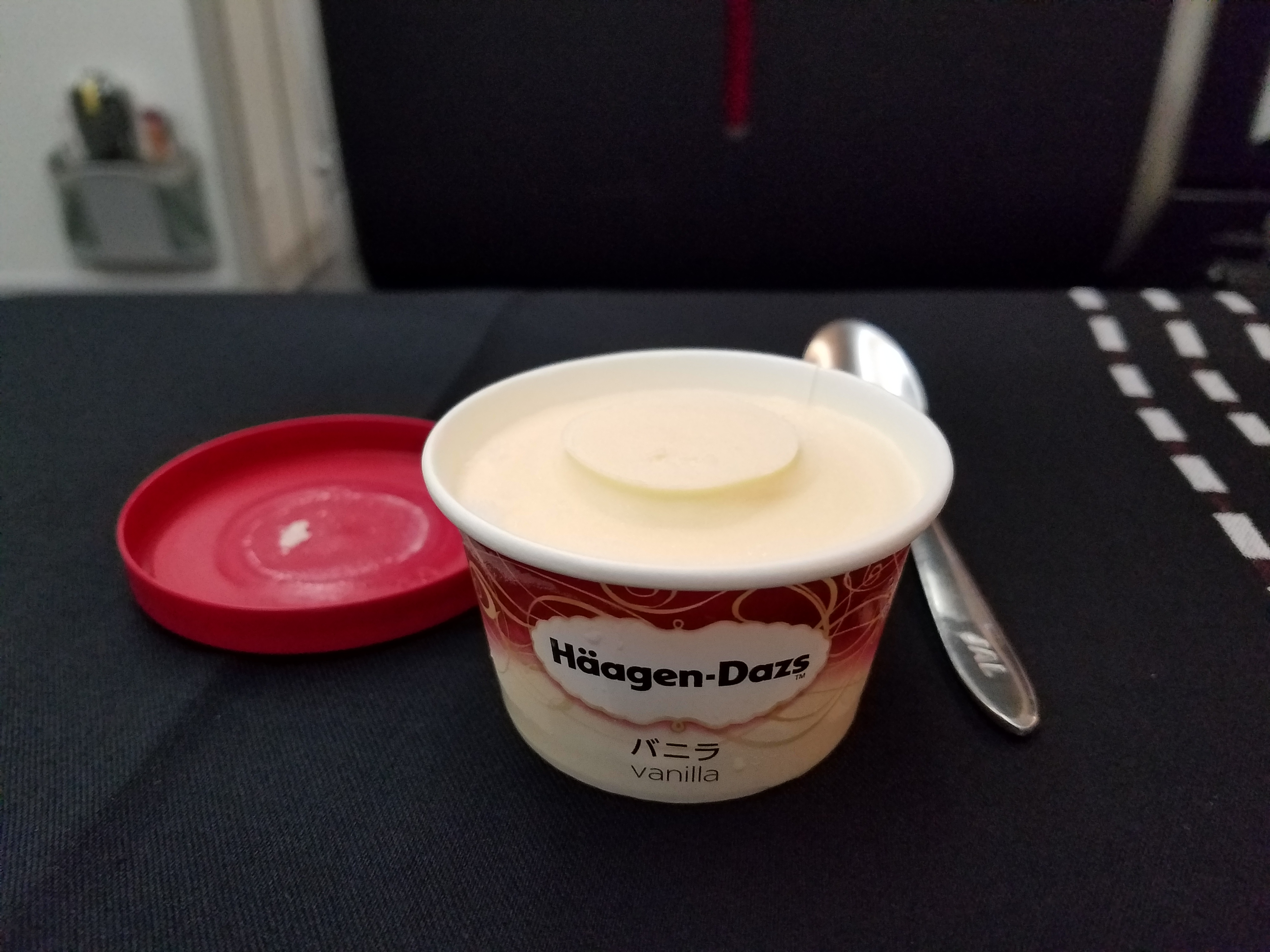
A flight attendant collected my used cup, refilled my water, and I reclined for a bit and dozed off. Next thing I knew we were beginning our descent into Shanghai Pudong.


Be very careful with these seats. Once you touch one of the controls, the seat continues moving until you press again. This is the opposite of most seats (where you have to hold down the button). I accidentally touched one of the controls and the seat proceeded to knock my iPad out of the side cubby and crush it, before I could react. One more reason to avoid these seats (and what JAL was thinking putting in angled seats on their new 787s, I don’t know).
I was on a JAL 767 flying domestically within Japan. They boarded the entire plane and closed the doors in 12 minutes (it was about two-thirds full).
It’s amazing how quickly foreign carriers can board these planes without the endless need for boarding groups in the U.S.
I’ve been on a lot of intra-Asia flights with more dated J cabins…in fact I’d say for me it has been the rule more than the exception, especially on JAL and CX.
@Daniel
That’s more a function of scanning boarding passes and checking ID as you enter the boarding area, instead of when you are boarding. I do think that process makes more sense and is more efficient, but obviously requires the airport infrastructure to handle that process, which is why we don’t see it in the US.
I was thinking about recliner type seats yesterday as I flew from SFO to ORD in an absolutely ancient UA 757. I actually found the big type seat comfortable and probably better than a flat bed type seat for a 4hr daytime Flight. Wider and strangely comfortable.
I can’t remember entering a domestic plane and going left for a long time!!
I find JAL food to be weirder than it is good, but since I only fly them occasionally, I’m OK with weird. It’s certainly different from typical airline fare.
The reason your premium cabin was half empty — with coach being full — is because it doesn’t make sense for most people to pay for this service on a short flight. That nice food isn’t “free” to the airline; they have to include it in the ticket price. The reason USA domestic food isn’t as fancy is because there isn’t a sufficient market for it. JAL is just less sophisticated (and therefore less profitable) than the major US airlines in matching service levels to actual consumer demand. Like I’m sure you didn’t actually pay for your flight and would have flown coach had you actually had to pay.
One reason why the premium cabin was half empty is because it’s not full of free loaders upgraded through their elite membership in frequent flyer programmes on US airlines. For many foreign carriers, they actually have customers who pay for a quality product (yes even for a 2 hours flight), not for a huge recliner with sagging leather, serviced by sagging flight attendants.